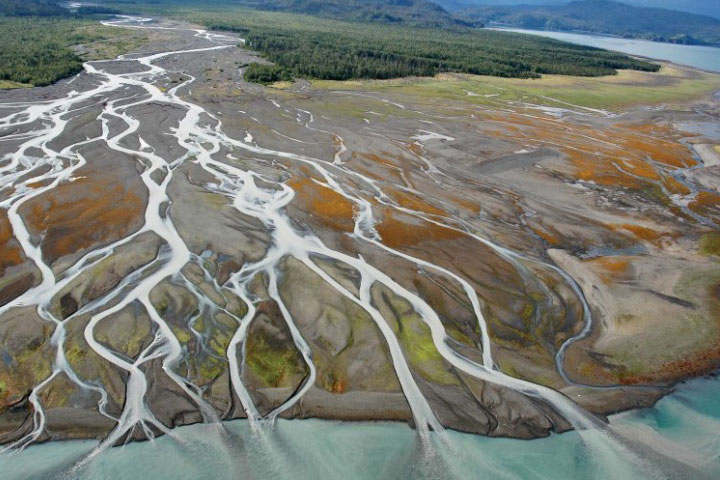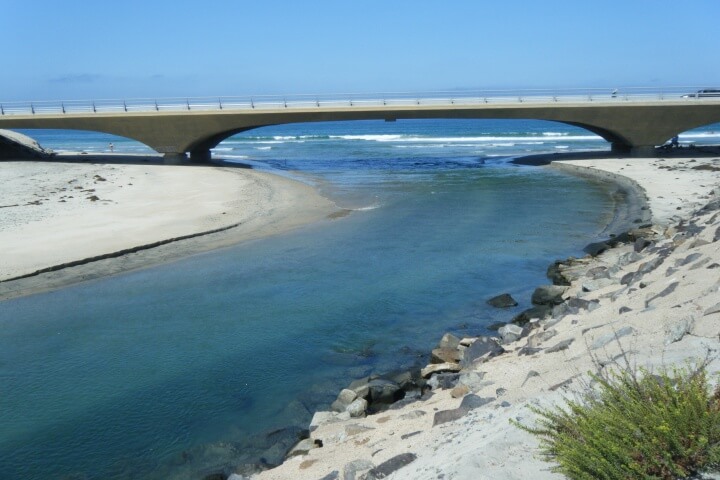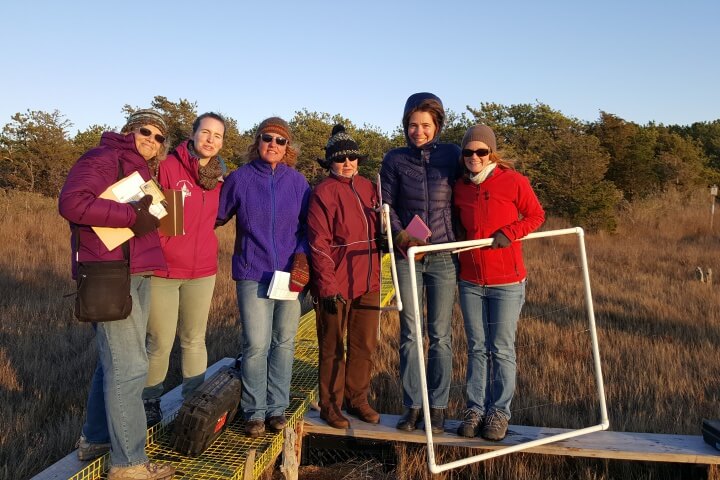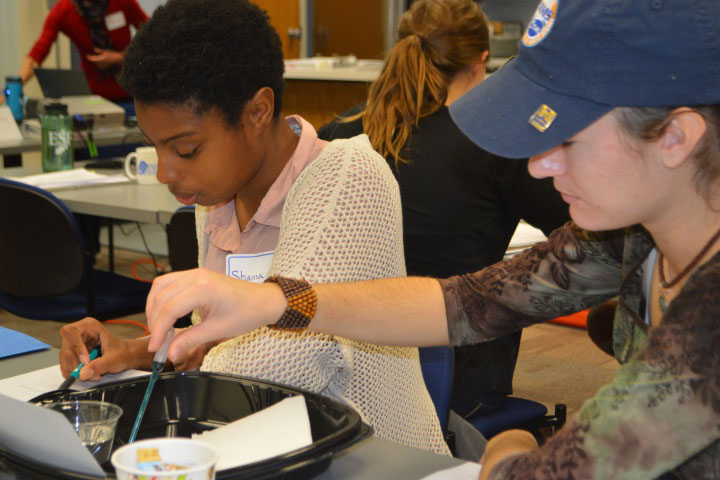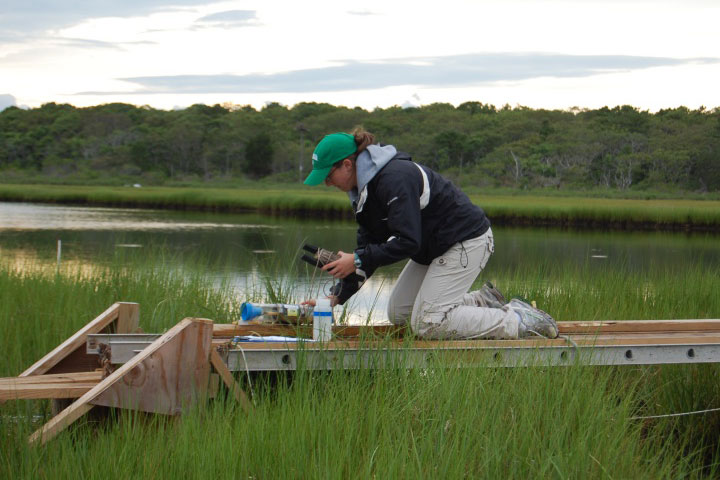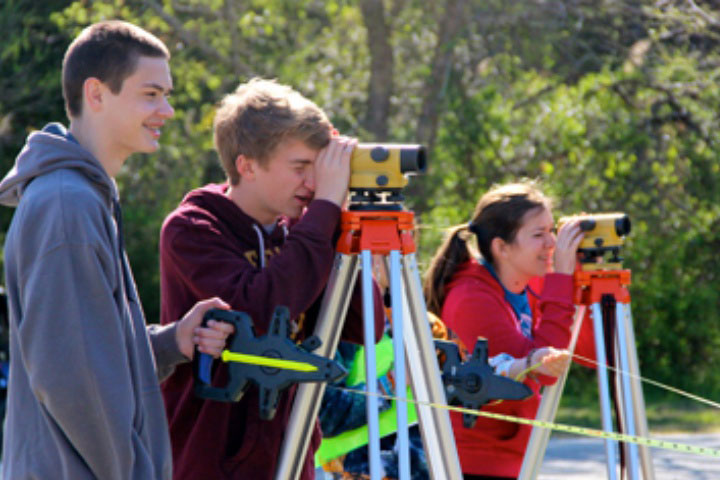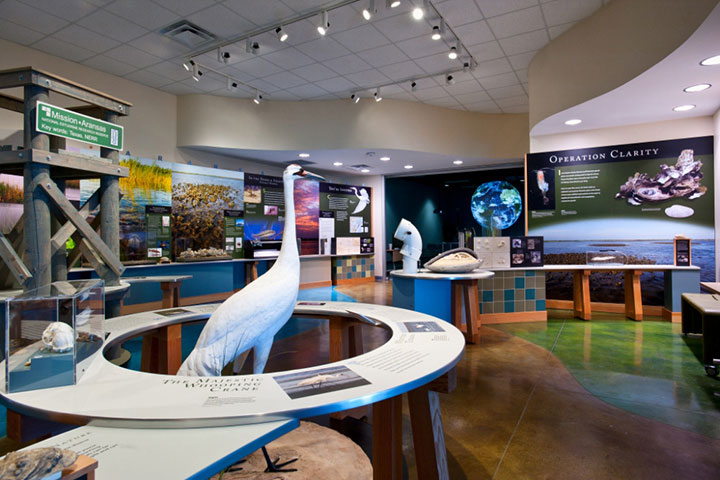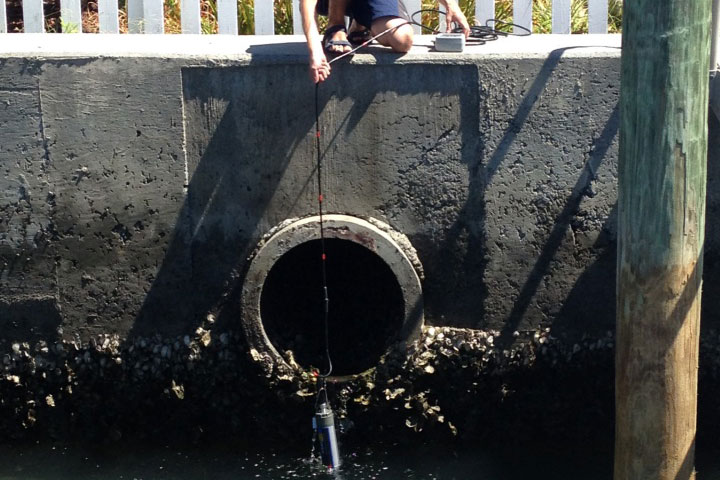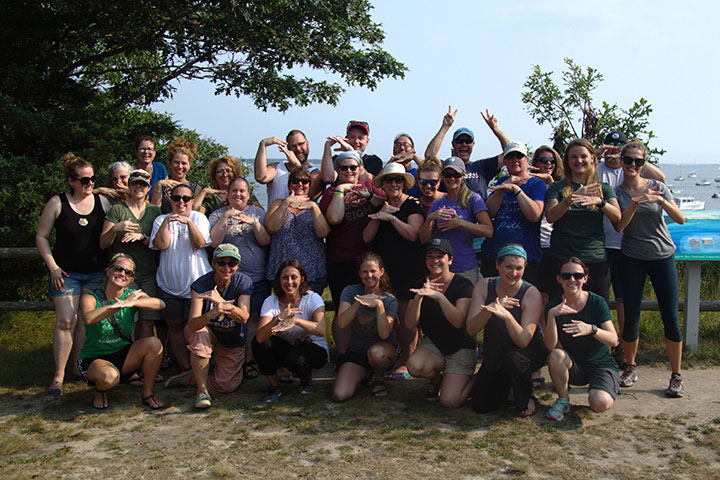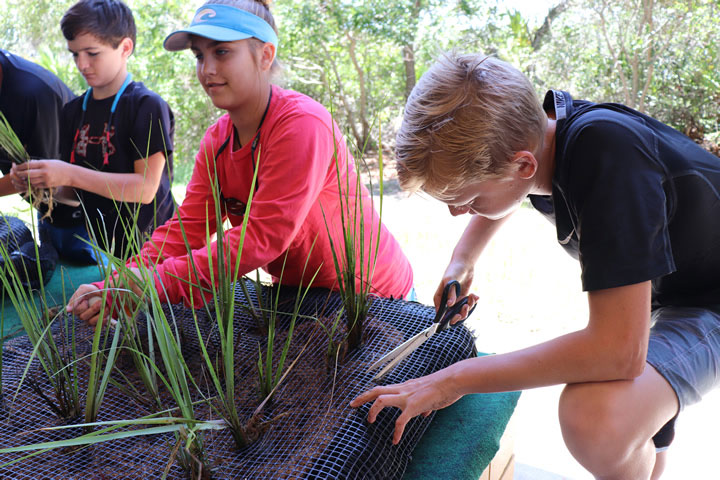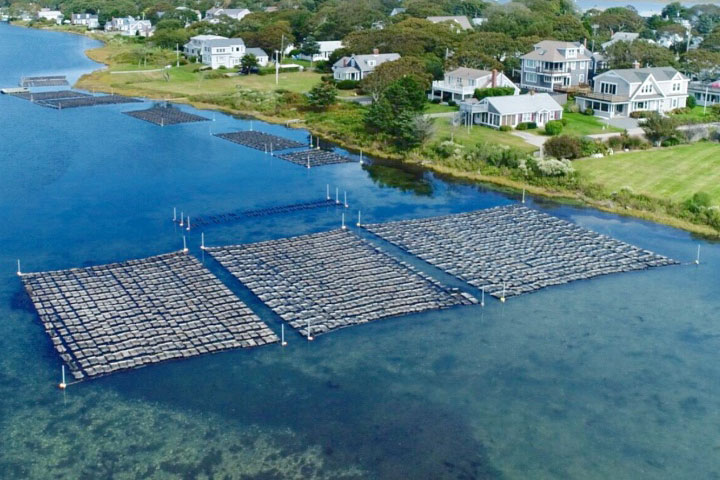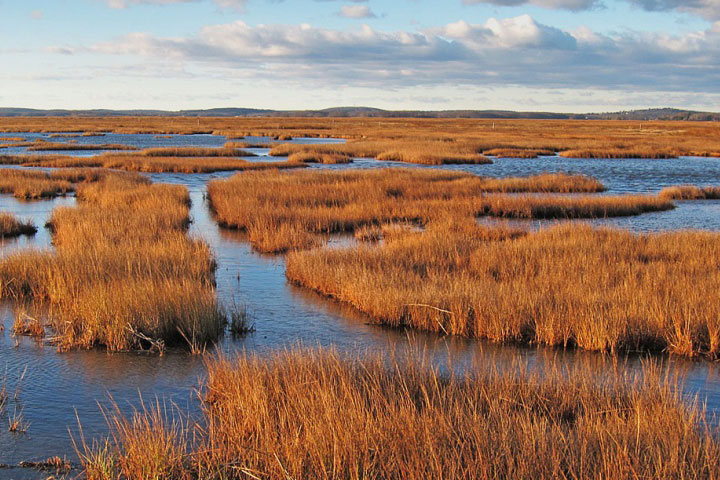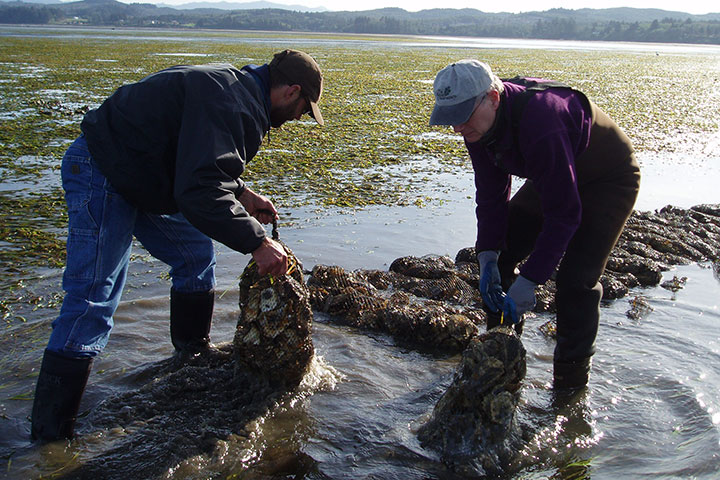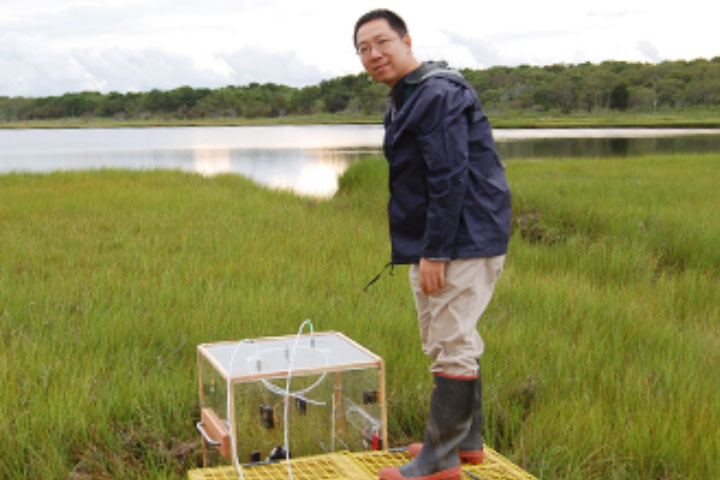Collections (beta)
Collections (beta)
These collections showcase interrelated NERRS Science Collaborative projects. Select a collection below the map to read more and see the map update with interactive elements.
Please use this Google Form to provide questions or comments on this page.
Click tiles below to display project collections. View project pages to learn more.
Researchers, educators, and partners have been exploring innovative approaches to promote coastal stewardship through educational resources and initiatives.
The map shows Science Collaborative projects with a specific focus on youth or K-12 teachers, and projects that created K-12 education products as part of their work.
The projects featured here illustrate a range of innovative approaches to integrate research and educational initiatives. For example, some projects offered creative ways for students to dig into monitoring data to learn about their estuary, other projects engaged students through art, role playing exercises and local restoration projects to help students grapple with current environmental issues, and still others tapped undergraduate and graduate students to develop unique lessons and multimedia resources. All of these projects demonstrate the importance of protecting natural resources and provide valuable hands-on experiences that foster coastal stewardship.
In addition to these grant supported projects, each National Estuarine Research Reserve provides educational programming for students, teachers and community members. Contact the Education Coordinator at your local reserve to explore partnership opportunities and learn more about the broader impact of reserve programs through this NOAA infographic: Hands-on learning fosters human connection to estuaries.
Panel Webinar (July 28, 2020): Innovative Approaches to Integrating Research and K-12 Education to Advance Estuary Stewardship
Carrying Out Climate Scenario Planning for the Kenai Peninsula, Alaska
To help coastal communities on the Kenai Peninsula plan for a changing climate, this project engaged local stakeholders to collaboratively develop plausible future planning scenarios based on a wide range of possible environmental responses to a changing climate. In addition, the project team hosted art and science workshops in which elementary students investigated climate science, graphed real data showing local impacts, and illustrated climate issues in silk paintings.
Partner Reserves
- Kachemak Bay, AK
- Tijuana River, CA
Monitoring and Management of Lagoon Mouths in Southern California
Students explore how management decisions affect water quality
Audience: grade 6-8 classrooms
Resources: lesson materials and graphs
Part of a project that analyzed long-term monitoring data about the impacts of management decisions on the health of Southern California’s coastal lagoons, this project updated the middle school curriculum, Don’t Shut Your Mouth.
Using Estuary Data to Teach about Coastal Impacts of Climate Change
Equipping teachers to tell the story of coastal climate impacts
Audience: grade 6-12 classrooms
Resources: lesson plans
This project developed high-quality teacher workshops and a series of lesson plans that bring climate change conversations into the classroom, using data from Northeast National Estuarine Research Reserves, to tell the story of climate impacts on coastal habitats.
Partner Reserves
- Great Bay, NH
- Narragansett Bay, RI
- Waquoit Bay, MA
- Wells, ME
Creating an Alliance of Scientists and Educators in Virginia
Graduate students create science lessons based on their research
Audience: grade 6-12 classrooms
Resources: lesson plans
This project expanded the Virginia Scientists and Educators Alliance, which brings authentic, topical research into middle and high school science classrooms by enabling graduate students at Virginia Sea Grant-affiliated universities develop lesson plans based on their marine research.
Bringing Wetlands to Market Phase 2: Expanding Blue Carbon Implementation
During this second phase of the Bring Wetlands to Market project, the team developed a verified and generalized model that can be used across New England and the mid-Atlantic East Coast to assess and predict greenhouse gas fluxes and potential wetland carbon storage using a small set of readily available data. In addition, the team deepened their engagement with regional decision makers and expanded their high school blue carbon STEM curriculum resources. This project is included in both the Blue Carbon and K-12 Education collections.
Climate Education for a Changing Bay Expansion
Teachers use real-world data from Virginia’s estuaries to build climate literacy
Audience: grade 9 classrooms
Resources: lessons and teaching materials
This project built on the success of the NOAA watershed education project Climate Education for a Changing Bay to make data from the Chesapeake Bay Sentinel Site Cooperative available to ninth grade earth science classrooms to increase student climate literacy.
Undergraduates Develop Job Skills by Creating Interactive Software for Reserve Visitors
Using technology to create interactive learning opportunities
Audience: youth - adult
Resources: game images and code
Delaware, Guana Tolomato Matanzas, and Mission-Aransas National Estuarine Research Reserves partnered with undergraduate software engineering students at the University of Delaware to produce educational computer games for reserve visitors that explore the dynamic nature of estuarine systems.
Partner Reserves
- Delaware
- Guana Tolomato Matanzas, FL
- Mission Aransas, TX
Collaborative Research to Manage Stormwater Impacts on Coastal Reserves
Students explore the causes and impacts of stormwater and water pollution
Audience: grades 3-12
Resources: lesson plans
Part of a collaborative research project to quantify stormwater runoff impacts to North Carolina estuaries, graduate students and the Scientific Research and Education Network in North Carolina developed three lesson plans to explore water pollution and how it affects students and their communities.
Watershed Stewardship in Action: Deaf Students on the Estuary (WADE)
ASL resources support STEM teachers and deaf students
Audience: youth - adult
Resources: video tutorials
To address the lack of American Sign Language resources to teach STEM concepts, this project developed new ASL vocabulary, created five video modules on key principles of estuary ecology, and provided professional development for teachers and field experiences for their deaf and hard of hearing students.
Partner Reserves
- Narragansett Bay, RI
- Waquoit Bay, MA
- Wells, ME
Spreading the Seeds of Estuary Health
Students grow marsh grasses to help restore shorelines
Audience: K-12 classrooms
Resources: teacher training and greenhouse supplies
This project leveraged lessons learned through two existing programs in different regions and helped 18 schools set up greenhouses to grow and transplant marsh grasses onto degraded shoreline sites.
Partner Reserves
- ACE Basin, SC
- Guana Tolomato Matanzas, FL
- North Carolina
- North Inlet-Winyah Bay, SC
- Sapelo Island, GA
Evaluating Whether Oyster Aquaculture Can Help Restore Water Quality
Oysters: A Tool for a Place-based Approach towards Learning
Audience: teachers in grades 3-12
Resources: teacher workshop and scientific diagram
Part of a collaborative research project to evaluate how oyster culturing operations impact water quality, this project team hosted a teacher workshop that used oysters as a vehicle to explore topics such as adaptations, life cycles, food webs, and human use and impacts on estuaries. The team also produced a graphic explaining how oysters help reduce nitrogen pollution.
Exploring Applications of Ecosystem Service Conceptual Models for Coastal Habitats
Students learn about ecosystem services provided by coastal habitat
Audience: grades 6-8
Resources: lesson plans and printable activities
Part of a collaborative project to help coastal managers streamline the integration of ecosystem services into their programs, this project created lessons and activities to introduce middle school students to the ecological, economic, and social benefits of coastal habitats.
Partner Reserves
- North Carolina
- Rookery Bay, FL
Building a Coastwide Olympia Oyster Network to Improve Restoration Outcomes
Students learn about native oyster populations and restoration on the west coast
Audience: grades 1-12
Resources: classroom and field-based lesson plans
Part of an effort to improve collaboration for native Olympia oyster restoration on the west coast, the Native Olympia Oyster Collaborative developed a collection of K-12 lesson plans that feature science, math, engineering, writing, art, and multidisciplinary classroom and field-based activities that engage students in various aspects of Olympia oyster ecology and restoration.
Partner Reserves
- Elkhorn Slough, CA
- Padilla Bay, WA
- San Francisco Bay, CA
- South Slough, OR
- Tijuana River, CA
Bringing Wetlands to Market Phase 1: Nitrogen and Coastal Blue Carbon
To help “bring wetlands to market,” the Waquoit Bay Reserve led a cutting-edge, collaborative research project in 2011 that examined the relationship among salt marshes, climate change, and nitrogen pollution, and developed tools to leverage blue carbon stored in wetlands to achieve broader management goals. As part a complement to this project, reserve educators developed a high school STEM curriculum module. This project is included in both the Blue Carbon and K-12 Education collections.
